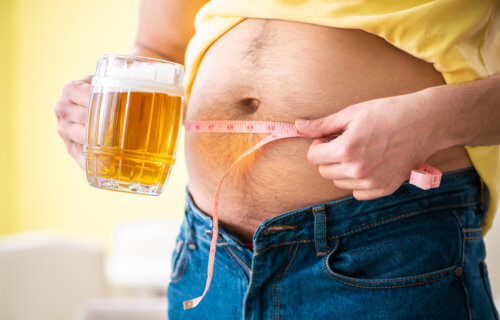LIVERPOOL, England — Excessive drinking is linked to a range of life threatening conditions including heart disease, cancer and diabetes. Doctors warn that a glass of wine can contain as many calories as a doughnut. A British government policy paper reports that 3.4 million adults consume an extra day’s worth of calories a week from alcohol each year, equivalent to an additional two months of food annually. Could requiring bottles or cans of alcohol to show calories be the key to lowering this eye-popping statistic?
The U.S. is in the top 12% of obese countries, followed by the U.K., in which a quarter of adults are grossly overweight. Considering that Brits are also among the world’s biggest boozers, mandatory stickers on bottles of beer, wine and spirits may reduce consumption, as well as obesity.
Nutrition labels on food is nothing new, but alcohol is exempt from food labeling laws. According to University of Liverpool researchers, three in four people are oblivious to calorie levels in alcohol. Around two in three British adults would support the move to introduce labeling. Labels could help “kill two birds with one stone,” suggest study authors.
“The government is considering whether calorie labeling of alcoholic drinks can help address obesity. Although it is unclear if calorie labels will have a meaningful impact on what people choose to drink, making sure drinks are clearly labeled is a step in the right direction and may also encourage the alcohol industry to cut calories in drinks,” says lead author Dr. Eric Robinson, according to South West News Service.
The findings are based on data pooled from 18 previous studies from around the world. Analysis reveals widespread public ignorance of the number of calories in alcoholic beverages. It also provides support for calories to be listed, just like ingredients. “Among regular drinkers, energy derived from alcohol can make a significant contribution to daily energy intake,” notes Dr. Robinson.
Gram for gram alcohol is the second most calorie-dense source of energy, just behind fat.
“Calorie labeling of alcoholic drinks is a public health measure that could be used to address both alcohol consumption and obesity. There is a moderate level of evidence revealing that people tend to be unaware of energy content in alcoholic drinks. This suggests that they are more likely to support than oppose energy labeling of alcoholic drinks,” the authors write.
A prior study in Canada finds the average participant consumes 250 calories from alcoholic drinks a day — 11% of their daily requirements. “Furthermore, laboratory evidence suggests individuals do not compensate in the short term by consuming less food. Provision of energy information on alcoholic drinks may help consumers to reduce consumption and daily energy intake,” the authors add.
Current U.K. law states that manufacturers do not have to provide nutritional information, such as number of calories per serving, on alcoholic drinks. Previous voluntary pledges made by the alcohol industry have been ineffective. Boris Johnson has launched a consultation program on making it public health strategy legislation to combat obesity.
The study suggests it will work by changing behavior. This in turn could help the nation’s waistlines as well as reducing alcohol consumption.
These findings are published in Obesity Reviews.
SWNS writer Mark Waghorn contributed to this report.
